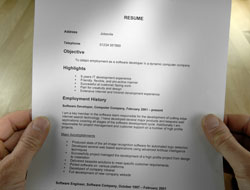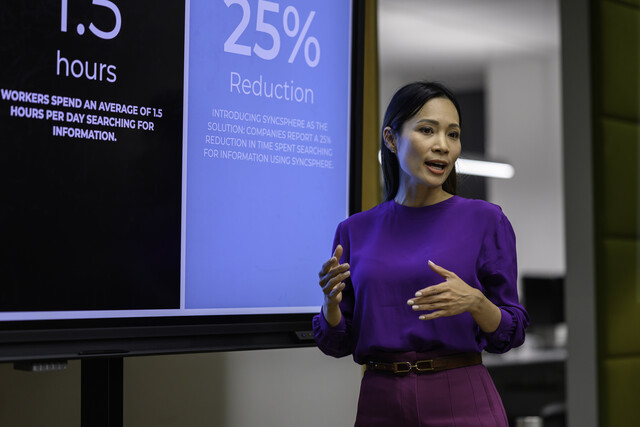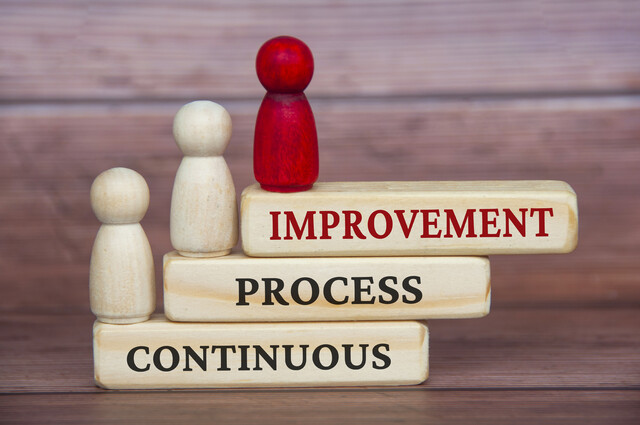Online Class: Collaboration Skills

-
14Lessons
-
22Exams &
Assignments -
7Hours
average time -
0.7CEUs
Course Description
In an era where diversity of thought is celebrated, collaboration emerges as the crucible where innovative solutions are forged. It's a symphony of ideas, where diverse perspectives, skills, and experiences harmonize to solve challenges more efficiently. While individual brilliance has its place, it's the collective intellect that often charts the path to groundbreaking solutions.
Embark on a Transformative Journey
Our meticulously designed course ventures deep into the heart of collaboration. With a curated blend of theoretical and practical insights, this course is your comprehensive guide to unlocking the myriad benefits of effective collaborative practices.
Course Highlights:
-
The Art of Collaboration: Understand the intricate web of processes that underpin successful collaboration. It's not just about getting people together; it's about ensuring that their combined energies are channeled productively.
-
Group Dynamics Decoded: Explore the social, emotional, and intellectual aspects of group interactions. From fostering essential skills to keeping participants motivated, we delve into every nuance.
-
Conflict: Catalyst or Catastrophe: Conflicts aren't always detrimental. Learn strategies to manage disagreements, turning them into catalysts for better solutions rather than letting them become roadblocks.
-
The Power of Listening: In the cacophony of collaborative discussions, the skill of truly listening stands paramount. Master the art of deep listening, ensuring every voice is heard and valued.
-
Beyond Teamwork - Building Consensus: Discover why collaboration transcends mere teamwork. Dive deep into the mechanics of consensus building, understanding its role in ensuring collective ownership and commitment.
-
Visualizing Solutions with Process Maps: Transform abstract discussions into tangible visuals. Learn to chart process maps that offer clarity, ensuring everyone is aligned and aware of the bigger picture.
-
Overcoming Barriers: No collaboration is devoid of challenges. Equip yourself with tools and strategies to navigate these barriers, ensuring they don't stymie the group's progress.
-
Efficiency in Collaboration: While collaboration is invaluable, it shouldn't be time-consuming. Unearth techniques to run productive meetings, communicate effectively, and ensure timely decision-making.
-
Time Management Mastery: From ensuring punctuality to optimizing discussions, delve into practical strategies that ensure meetings are both effective and efficient.
-
Decision Making in a Collaborative Environment: Grapple with challenging choices and learn to make decisions that are not just smart but also inclusive and sustainable.
The Collaboration Promise:
As we navigate a world that's increasingly interconnected and complex, collaboration stands as a beacon of hope, promising solutions that are holistic, inclusive, and innovative. While the journey of collaboration is replete with challenges, the rewards - in terms of outcomes and learnings - are profound.
Join us on this immersive exploration of collaboration. Whether you're a seasoned leader, an aspiring entrepreneur, or a professional eager to drive change, this course is your roadmap to harnessing the unparalleled power of collective effort. Together, let's co-create the future!
Course Lessons
Lesson 1. Harnessing Collective Brilliance: Unraveling the Benefits of True Collaboration
 Lesson 1 Video
Lesson 1 Video Review Practice Worksheet: Lesson-1-Activity-16051.pdf
Review Practice Worksheet: Lesson-1-Activity-16051.pdf Lesson discussions: Reasons for Taking this Course
Lesson discussions: Reasons for Taking this Course Complete Assignment: An Introduction
Complete Assignment: An Introduction Assessment: Exam 1
Assessment: Exam 1
Lesson 2. The Defensive Dilemma: Navigate Conversations Successfully
 Lesson 2 Video
Lesson 2 Video Review Practice Worksheet: Lesson-2-WorkSheet-16053.pdf
Review Practice Worksheet: Lesson-2-WorkSheet-16053.pdf Complete: Lesson 2 Activity
Complete: Lesson 2 Activity Assessment: Exam 2
Assessment: Exam 2
Lesson 3. The Power and Importance of Truthfulness in Collaborative Environments
 Lesson 3 Video
Lesson 3 Video Review Practice Worksheet: Lesson-3-HomeWork-16055.pdf
Review Practice Worksheet: Lesson-3-HomeWork-16055.pdf Assessment: Exam 3
Assessment: Exam 3
Lesson 4. The Art of Active and Effective Listening
 Lesson 4 Video
Lesson 4 Video Review Practice Worksheet: Lesson-4-HomeWork-16057.pdf
Review Practice Worksheet: Lesson-4-HomeWork-16057.pdf Complete: Lesson 4 Activity
Complete: Lesson 4 Activity Assessment: Exam 4
Assessment: Exam 4
Lesson 5. Beyond Individuality: Harnessing Collaboration through Awareness
 Lesson 5 Video
Lesson 5 Video Review Practice Worksheet: Lesson-5-Activity-16059.pdf
Review Practice Worksheet: Lesson-5-Activity-16059.pdf Assessment: Exam 5
Assessment: Exam 5
Lesson 6. Teamwork: From Formation to Fulfillment
 Lesson 6 Video
Lesson 6 Video Review Practice Worksheet: Lesson-6-WorkSheet-16061.pdf
Review Practice Worksheet: Lesson-6-WorkSheet-16061.pdf Assessment: Exam 6
Assessment: Exam 6
Lesson 7. Mastering Consensus: Achieving Group Harmony in Decision Making
 Lesson 7 Video
Lesson 7 Video Review Practice Worksheet: Lesson-7-WordSearch-16063.pdf
Review Practice Worksheet: Lesson-7-WordSearch-16063.pdf Assessment: Exam 7
Assessment: Exam 7
Lesson 8. Collaborative Leadership: Mastering the Art of Conflict Squelching
 Lesson 8 Video
Lesson 8 Video Review Practice Worksheet: Lesson-8-Downloadable-16065.pdf
Review Practice Worksheet: Lesson-8-Downloadable-16065.pdf Complete: Lesson 8 Activity
Complete: Lesson 8 Activity Assessment: Exam 8
Assessment: Exam 8
Lesson 9. Mapping Success: The Role and Importance of Process Maps
 Lesson 9 Video
Lesson 9 Video Review Practice Worksheet: Lesson-9-WordSearch-16067.pdf
Review Practice Worksheet: Lesson-9-WordSearch-16067.pdf Complete: Lesson 9 Activity
Complete: Lesson 9 Activity Assessment: Exam 9
Assessment: Exam 9
Lesson 10. Synergy of Accountability in Collaborative Work
 Lesson 10 Video
Lesson 10 Video Review Practice Worksheet: Lesson-10-HomeWork-16069.pdf
Review Practice Worksheet: Lesson-10-HomeWork-16069.pdf Complete: Lesson 10 Activity
Complete: Lesson 10 Activity Assessment: Exam 10
Assessment: Exam 10
Lesson 11. Breaking Down Walls: The Role of Leadership in Fostering Trust
 Lesson 11 Video
Lesson 11 Video Review Practice Worksheet: Lesson-11-Downloadable-16071.pdf
Review Practice Worksheet: Lesson-11-Downloadable-16071.pdf Assessment: Exam 11
Assessment: Exam 11
Lesson 12. Mastering Meeting Dynamics: Converting Dull Gatherings into Productivity Powerhouses
 Lesson 12 Video
Lesson 12 Video Review Practice Worksheet: Lesson-12-Activity-16073.pdf
Review Practice Worksheet: Lesson-12-Activity-16073.pdf Assessment: Exam 12
Assessment: Exam 12
Lesson 13. From Problems to Solutions: A Comprehensive Approach
 Lesson 13 Video
Lesson 13 Video Review Practice Worksheet: Lesson-13-WorkSheet-16075.pdf
Review Practice Worksheet: Lesson-13-WorkSheet-16075.pdf Complete: Lesson 13 Activity
Complete: Lesson 13 Activity Assessment: Exam 13
Assessment: Exam 13
Lesson 14. Decisions and Compromises: Navigating Daily Choices
 Lesson 14 Video
Lesson 14 Video Review Practice Worksheet: Lesson-14-WordSearch-16077.pdf
Review Practice Worksheet: Lesson-14-WordSearch-16077.pdf Lesson discussions: End of Course Poll; Reasons for Taking this Course; Course Comments
Lesson discussions: End of Course Poll; Reasons for Taking this Course; Course Comments Assessment: Exam 14
Assessment: Exam 14 Assessment: The Final Exam
Assessment: The Final Exam
Learning Outcomes
- Define the concept of collaboration and distinguish it from similar concepts like teamwork and innovation.
- Identify the benefits of collaboration in business settings, such as resource sharing and problem-solving.
- Demonstrate the ability to identify personal triggers that lead to defensive behavior and apply strategies to manage them effectively in workplace situations.
- Describe the steps necessary to utilize defensive approaches positively in communication to foster collaboration and maintain healthy relationships.
- Demonstrate the impact of truthfulness on organizational productivity and employee relationships.
- Recognize the top reasons why individuals hesitate to tell the truth in collaborative environments.
- Demonstrate the ability to actively listen by summarizing the main points of a speaker's message without personal bias.
- Identify the differences between hearing and listening and explain the impact on effective communication in collaborative settings.
- Apply the principles of collaborative awareness to effectively contribute in a group setting by building trust and understanding others' ideas and values.
- Demonstrate an understanding of self-awareness by identifying personal characteristics and emotions that influence collaboration outcomes.
- Demonstrate an understanding of the importance of trust, mutual respect, and shared goals in forming effective collaborative teams.
- Identify and describe the five stages of a collaborative team's life cycle, using examples from real-world scenarios to illustrate each stage.
- Define consensus and explain its importance in collaborative decision-making processes.
- Demonstrate mastery of lesson content at levels of 70% or higher.
Additional Course Information

- Document Your Lifelong Learning Achievements
- Earn an Official Certificate Documenting Course Hours and CEUs
- Verify Your Certificate with a Unique Serial Number Online
- View and Share Your Certificate Online or Download/Print as PDF
- Display Your Certificate on Your Resume and Promote Your Achievements Using Social Media

Student Testimonials
- "Very informative." -- Kathy R.
Related Courses
-
 7 hours
0.7 CEUs
Introduction to Ethics
+ More Info
7 hours
0.7 CEUs
Introduction to Ethics
+ More Info
-
 5 hours
0.5 CEUs
Talent Management for Business
+ More Info
5 hours
0.5 CEUs
Talent Management for Business
+ More Info
-
 2 hours
0.2 CEUs
Sexual Harassment Compliance
+ More Info
2 hours
0.2 CEUs
Sexual Harassment Compliance
+ More Info
-
 5 hours
0.5 CEUs
Emotional Intelligence
+ More Info
5 hours
0.5 CEUs
Emotional Intelligence
+ More Info
-
 5 hours
0.5 CEUs
Community Development 101
+ More Info
5 hours
0.5 CEUs
Community Development 101
+ More Info
-
 5 hours
0.5 CEUs
Critical Thinking Skills
+ More Info
5 hours
0.5 CEUs
Critical Thinking Skills
+ More Info
-
 5 hours
0.5 CEUs
The Art of Setting Goals
+ More Info
5 hours
0.5 CEUs
The Art of Setting Goals
+ More Info
-
 7 hours
0.7 CEUs
Introduction to Logic
+ More Info
7 hours
0.7 CEUs
Introduction to Logic
+ More Info
-
 5 hours
0.5 CEUs
Lawful Employee Termination
+ More Info
5 hours
0.5 CEUs
Lawful Employee Termination
+ More Info
-
 8 hours
0.8 CEUs
Decision Making Skills
+ More Info
8 hours
0.8 CEUs
Decision Making Skills
+ More Info
-
 6 hours
0.6 CEUs
General Receptionist
+ More Info
6 hours
0.6 CEUs
General Receptionist
+ More Info
-
 6 hours
0.6 CEUs
Goal Setting for Business
+ More Info
6 hours
0.6 CEUs
Goal Setting for Business
+ More Info
-
 11 hours
1.1 CEUs
How to Write Effective Policies and Procedures
+ More Info
11 hours
1.1 CEUs
How to Write Effective Policies and Procedures
+ More Info
-
 9 hours
0.9 CEUs
Product Management 101
+ More Info
9 hours
0.9 CEUs
Product Management 101
+ More Info
-
 7 hours
0.7 CEUs
Management Consultant 101
+ More Info
7 hours
0.7 CEUs
Management Consultant 101
+ More Info
-
 7 hours
0.7 CEUs
Lean Management
+ More Info
7 hours
0.7 CEUs
Lean Management
+ More Info
-
 5 hours
0.5 CEUs
Habits of Millionaires
+ More Info
5 hours
0.5 CEUs
Habits of Millionaires
+ More Info
-
 12 hours
1.2 CEUs
How to Write Case Studies
+ More Info
12 hours
1.2 CEUs
How to Write Case Studies
+ More Info
-
 7 hours
0.7 CEUs
Personal Communication Skills Level 2
+ More Info
7 hours
0.7 CEUs
Personal Communication Skills Level 2
+ More Info
-
 7 hours
0.7 CEUs
How to Deal with Difficult Personalities
+ More Info
7 hours
0.7 CEUs
How to Deal with Difficult Personalities
+ More Info
-
 5 hours
0.5 CEUs
Team Building 101
+ More Info
5 hours
0.5 CEUs
Team Building 101
+ More Info
-
 7 hours
0.7 CEUs
Organizational Behavior in Business
+ More Info
7 hours
0.7 CEUs
Organizational Behavior in Business
+ More Info
-
 14 hours
1.4 CEUs
Report Writing 101
+ More Info
14 hours
1.4 CEUs
Report Writing 101
+ More Info
-
 6 hours
0.6 CEUs
Personal Assistant 101
+ More Info
6 hours
0.6 CEUs
Personal Assistant 101
+ More Info
-
 7 hours
0.7 CEUs
Negotiation Skills
+ More Info
7 hours
0.7 CEUs
Negotiation Skills
+ More Info
-
 8 hours
0.8 CEUs
Motivational and Public Speaking
+ More Info
8 hours
0.8 CEUs
Motivational and Public Speaking
+ More Info
-
 6 hours
0.6 CEUs
Sustainable Development for Business
+ More Info
6 hours
0.6 CEUs
Sustainable Development for Business
+ More Info
-
 10 hours
1.0 CEUs
Mastering Sales Skills 101
+ More Info
10 hours
1.0 CEUs
Mastering Sales Skills 101
+ More Info
-
 5 hours
0.5 CEUs
Kaizen 101 - An Introduction
+ More Info
5 hours
0.5 CEUs
Kaizen 101 - An Introduction
+ More Info
-
 7 hours
0.7 CEUs
Leadership Skills for Managers
+ More Info
7 hours
0.7 CEUs
Leadership Skills for Managers
+ More Info
-
 8 hours
0.8 CEUs
Creating a Positive Work Environment
+ More Info
8 hours
0.8 CEUs
Creating a Positive Work Environment
+ More Info






